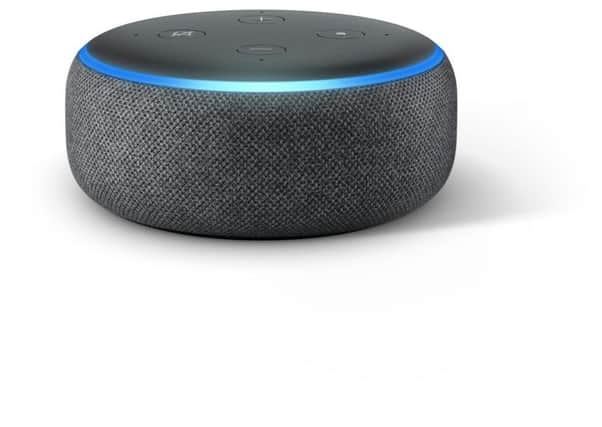Why Amazon's new Echo Dot could be your new standalone digital radio


In the case of the redesigned, £50 Echo Dot, which made its way on to the market the day before yesterday, it’s simplest to think of it as a radio.
It’s actually much more than that, but a radio will do for starters. It picks up all the BBC digital stations and any other network in the world that sends out a stream over the internet. That includes all the regional commercial services and even local stations like the charmingly named Drystone Radio in the Yorkshire Dales. It’s mains operated so it’s not exactly portable, but as a table-top set it’s better value than many of the DAB radios out there.
Advertisement
Hide AdAdvertisement
Hide AdThe Echo Dot is the entry-level product in Amazon’s new range, through which it hopes to extend the medium of voice control by a “digital personal assistant” called Alexa, to more devices than ever around the home.
You can say to it, “Alexa, turn on the TV”, and instead of telling you to do it yourself, which would be the sensible response, it sends an inaudible signal across the room. So long as your TV has a compatible adapter plugged in, it will do as it is told.
Using it as a radio is done in pretty much the same way. There are no push buttons to tune it because all you need do is say, “Alexa, turn on Radio 4” and it should begin playing through its built-in 1.6in speaker. If you want better sound, the larger, £90 Echo model has dual speakers.
It also connects to Spotify, so you can stream music of your own choosing, although for serious listening you’ll want to hook it up to your h-fi speakers, either through Bluetooth or a mini-jack cable.
Advertisement
Hide AdAdvertisement
Hide AdAmazon lists dozens of other possible uses for its smart devices, but you have to go further up the range to take advantage of them all, and many are, in any case, gimmicks. This is betrayed by the “popcorn setting” on the company’s £60 microwave, which goes on sale later in the year and is capable of switching itself on when you tell it to. But since you have to manually put something inside it first, you might wonder whether this is automation for its own sake.
The £30 wall clock, also available shortly, is more functional, but only if you have a houseful of other smart devices, since it recognises the timers you’ve set and lights up so you can see them at a glance.
More usefully, the Alexa software can now listen for smoke alarms or windows being broken, and send a security alert to a mobile phone if triggered.
But Amazon admits that the concept is still a work in progress, reliant on other companies to come up with compatible household appliances and consumer electronics. In the meantime, there is a £13 adaptor which plugs into any 13-amp socket and allows remote control of whatever is plugged in there. It’s similar to as any other plug-in timer except that it forms part of your wi-fi network and can be controlled remotely by an app on your phone.
Advertisement
Hide AdAdvertisement
Hide AdAmazon insists that the smart market is approaching its tipping point, and a credible £50 device that can be bought and used as a standalone radio should certainly put the technology in homes whose owners that might otherwise looked askance. The rest will remain content to turn on their own TV sets.